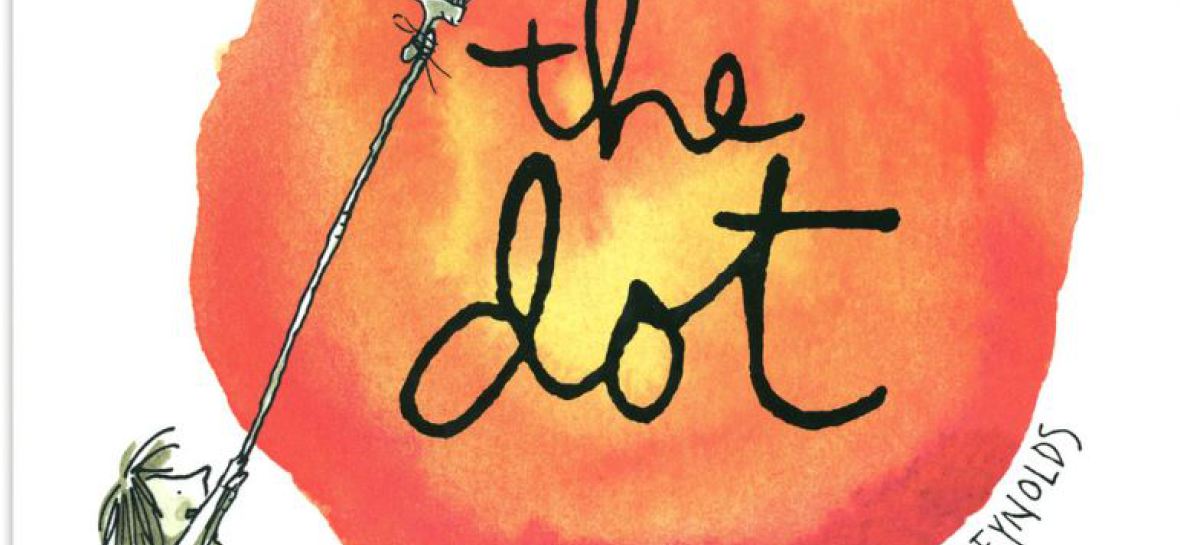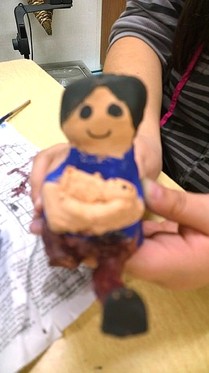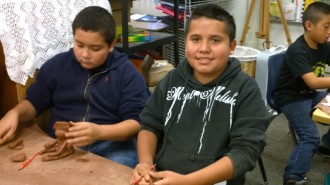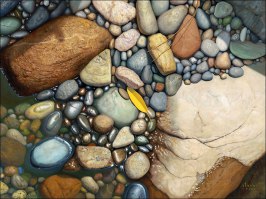

An Adapted ARTSEDGE Lesson :A Listening Doll
Native American Story Teller Dolls
Essential question: What can we learn about the continuity of Pueblo culture from pottery and other traditional items from past and present?
Summary
Art's Edge "A Listening Doll" & National Parks Service "Teaching with Museums" served as wonderful resources for this lesson.
"The Pueblos combined their sculpture skills with their love of storytelling and began a tradition of creating "storyteller dolls." Students will discuss the process of storytelling and listening to stories, then create a listening doll in the tradition of the Native American storyteller dolls" ~Arts Edge, "A Listening Doll"
Learning Objectives
Students will:
- Learn about Pueblo Indian storyteller dolls.
- Create a storyteller doll.
- Understand the basic ways of working with clay.
- Be able to explain good listening skills.
- Discuss the process of storytelling.
- Discuss and assess the various listening dolls created by the class.
For more information on Native American culture and traditions, visit the National Museum of the American Indian.
Artistic Perception
1.0 Identify and describe the principles of design in visual composgitions, emphasizing unity and harmony.
Creative Expression
2.7 Communicate values, opinions, or insights through an original work of art.
VA CA Historical and Cultural Context
3.1 Describe how local and national art galleries and museum contribute to the conservation of art.
3.2 identify and describe various traditional and folk arts from historical periods worldwide.
3.3 Identify and compare works of art from various regions of the United States.
Aesthetic Valuing
4.2 Compare the different purposes of specific cultures for creating art.
4.3 Develop and use specifice criteria as individuals and in groups to assess works of art.
4.4 Assess their own works of art, suing specidic criteria and describe what changes they world make for improvement.
Vocabulary For Students
Among the Bandelier images on the web, there is a
series of photos showing the steps in making a traditional
Pueblo pot; the work was done by Legoria Tafoya,
Pablita Velarde’s sister.
As a class,small group, or partners, create a living
museum tablou showing the sequence of each step in
creating pottery to help students in remembering the
process.
Steps to Make a Story Teller Doll
1. Take a large potato size lump of clay and divide it into 3 balls. I used 50/50 red or terracotta clay.
2. Take one ball for the head and roll it in the palm of your hand, softening it and then press your thumb into it, creating a well. This is like creating a pinch pot.
3. Pull the clay a bit at the opening to elongate it and push together to make it look like a neck
4. Take the second ball and pat and roll it out to be about 4 ¾ high by 3 ¼ “ inches wide. Score and overlap sides to become a cylinder, like the size of a toilet paper tube. Stand it up.
5. Score the top of the cylinder and the bottom of the neck and moisten with slip to aid in joining them together. Work slowly smoothing out the edges inside and out.
6. Take remaining clay and roll out with both hands a coil, or as the little people call it, “a snake.” Cut it into 4 pieces; 2 for arms and 2 for legs. Join them to the body.
7. Create little people to add to the story teller by shaping little lumps of clay
8. Let the story teller dry out and then fire it in the kiln.
9. After firing, paint the story teller and her children with tempera, acrylic, or even water color.
10. I let the children chose how they want to paint their doll. Some chose to use authentic Pueblo designs and earth colors, while others made their doll reflect their culture.
11. I spray them with a clear gloss to give it a bit of shine and protect the paint.
12. Showcase the works with a special evening to honor the young artists and their art. The dolls can be shown by setting on black mats and students can display their writing with their art.
Student Assessment
Artful Teaching
Mrs. Schellenberg & Young Artists
Ralph Waldo Emerson's Poem: Success- to leave the world a bit better, whether by a healthy child, a garden patch or a redeemed social condition; To know even one life breathed easier because of you.
Thank you AT&T
We used the wiring for our artful galimotos




















